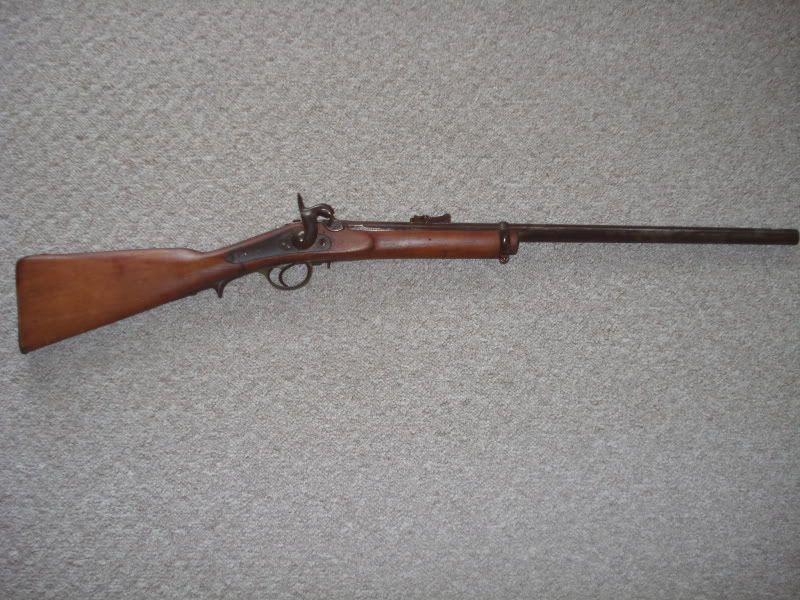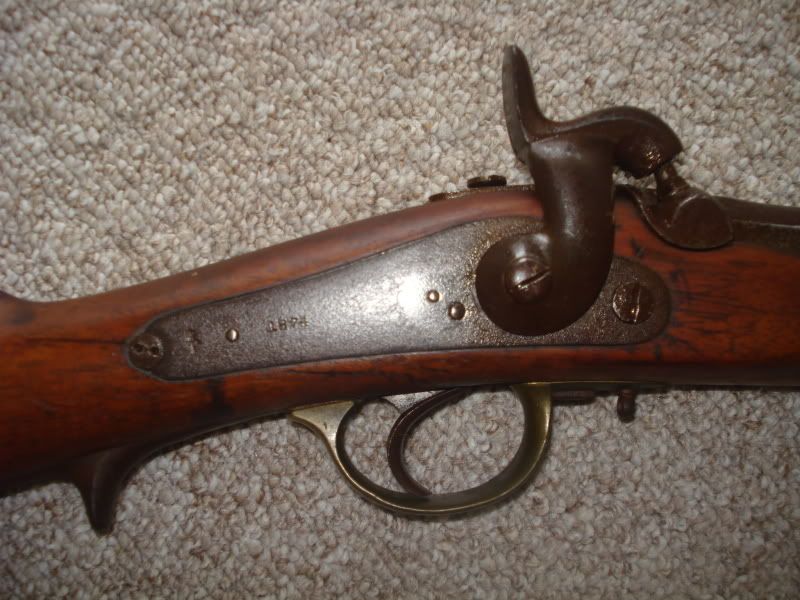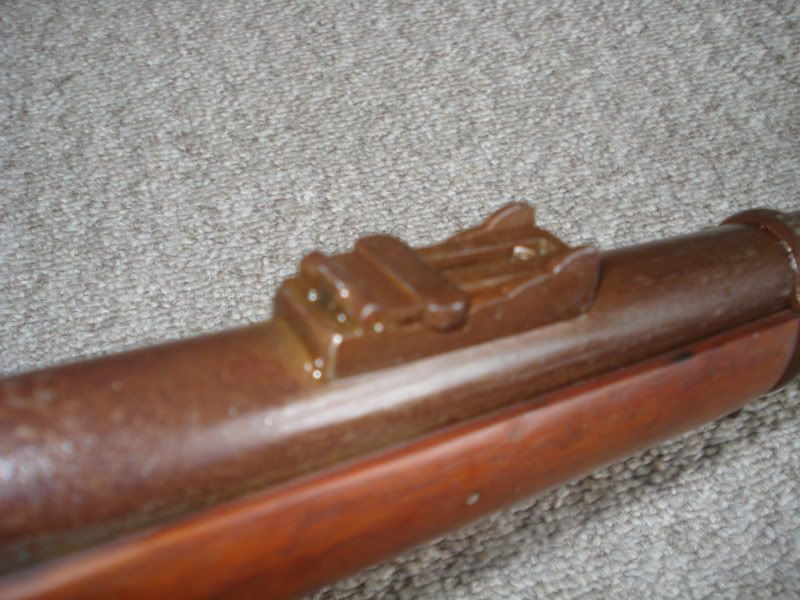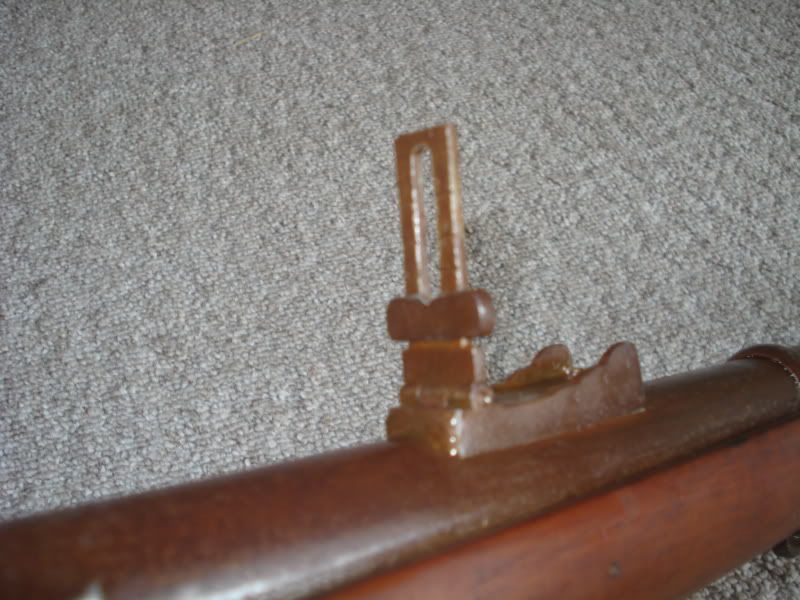Vairochana
40 Cal.
- Joined
- Sep 5, 2006
- Messages
- 191
- Reaction score
- 0
Ok, I picked up this little gem yesterday.
After initial research I determined that it is a French pattern back action lock (possibly 1853),
I suspected that it was a "Zulu" trade gun, It was suggested that it may have some Belgian origins also.
There are a number of proof and other marks which I will describe below, significantly tho they all appear to be British-the only one I can identify is the Birmingham BP proof so I am assuming it was rebarelled in Britain perhaps for the colonies and that is how it got to Oz.
Proofs and other significant marks (these are mostly under the barrel):
There is a Birmingham BP proof.
the name J.Cook
the name ?.Turner
WW
there is a V near J.Cook
three parallel straight score lines
T.T
6 or 9 in an oval
a crown (queens?) with a B below then SA below then 4 below forming a diamond with no border (this one is all over the furniture)
33
22
some other marks I can't see clearly
and a serial no
inside the barrel channel, pressed into the wood is a faint name Cookson.
The lock has no identifiable marks except the date 1874 and the Crown mark described above.
The triggerguard has 12 on it.
The barrel is approx .60 with rifling under the rust/patina.
The front sight has been ground of at some time.
The ladder sight looks a little odd-see pics, no "battle sight"
The triggerguard looks French also
Happy to hear suggestions
Pics:






After initial research I determined that it is a French pattern back action lock (possibly 1853),
I suspected that it was a "Zulu" trade gun, It was suggested that it may have some Belgian origins also.
There are a number of proof and other marks which I will describe below, significantly tho they all appear to be British-the only one I can identify is the Birmingham BP proof so I am assuming it was rebarelled in Britain perhaps for the colonies and that is how it got to Oz.
Proofs and other significant marks (these are mostly under the barrel):
There is a Birmingham BP proof.
the name J.Cook
the name ?.Turner
WW
there is a V near J.Cook
three parallel straight score lines
T.T
6 or 9 in an oval
a crown (queens?) with a B below then SA below then 4 below forming a diamond with no border (this one is all over the furniture)
33
22
some other marks I can't see clearly
and a serial no
inside the barrel channel, pressed into the wood is a faint name Cookson.
The lock has no identifiable marks except the date 1874 and the Crown mark described above.
The triggerguard has 12 on it.
The barrel is approx .60 with rifling under the rust/patina.
The front sight has been ground of at some time.
The ladder sight looks a little odd-see pics, no "battle sight"
The triggerguard looks French also
Happy to hear suggestions
Pics:















